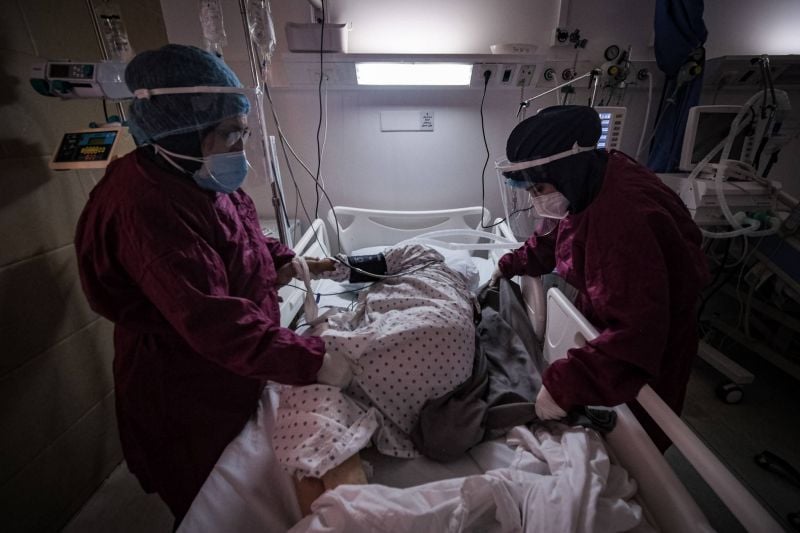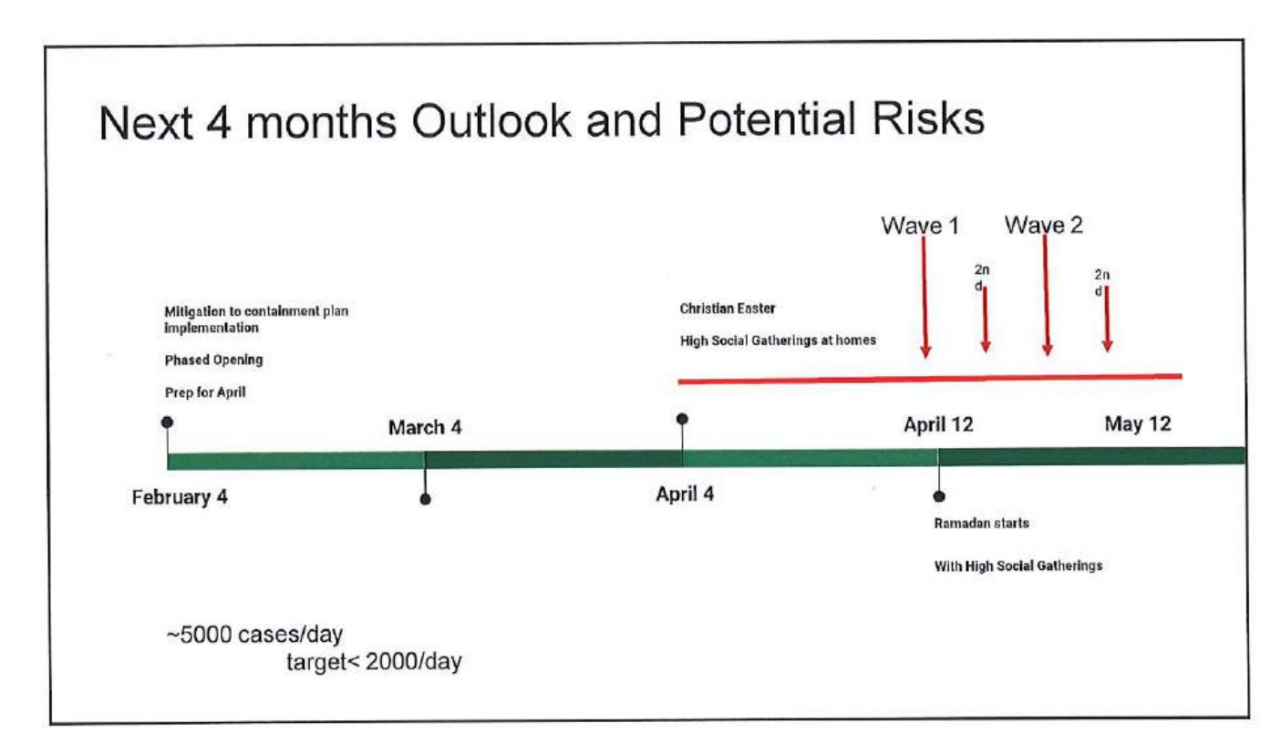
Nurses care for a COVID-19 patient at Sibline Governmental Hospital. (Credit: João Sousa/L’Orient Today)
BEIRUT — On three of the last five days, Lebanon has registered a new record for daily coronavirus-related deaths, as a steady stream of patients in critical condition continues to arrive at COVID-19 units.
For the health care workers who come face to face with the ferocity of the virus on every shift, losing patients never gets any easier.
In the COVID-19 unit of Geitawi Hospital, at least two patients die every day, internal medicine resident Georges Namnoum told L’Orient Today.
“We are trained to deal with patients objectively and avoid getting attached to our patients,” he said. “But we don’t succeed every day. It’s extremely tough.”
Lebanon registered 2,496 new cases of COVID-19 on Saturday, with 19.4 percent of local PCR tests coming back positive. Sixty-seven more people died, bringing the total death toll to 3,562.
On Jan. 14, the government introduced a 24-hour curfew and shut down nearly all businesses with the aim of easing pressure on overstretched hospitals. However, health care workers are not seeing much difference.
“Our wards are still crowded, we’re still at full capacity,” Namnoum said of the 36-bed unit he works in. “Residents [graduate doctors in the initial years of medical training] are doing more than we would ever have imagined and we’re completely overwhelmed.”
At Bellevue Medical Center, there has been a slight decrease in admissions for COVID-19, but bed occupancy is hovering around 90 percent, said infectious disease specialist Matta Matta, in part due to the long time it takes to discharge patients.
“Pressure on us has declined slightly, but it’s still definitely there,” he said. “It’s not only the fact that we are not able to save everyone — it’s that there’s no end in sight.”
According to the latest figures from the World Health Organization, 89 percent of intensive care beds dedicated to COVID-19 patients were occupied as of Thursday. In hospitals up and down the country, patients needing medical care wait in emergency departments until a bed frees up.
At Nabih Berri Governmental University Hospital in Nabatieh, there are no the COVID-19 beds available, and some patients are being scanned and treated in ambulances, according to hospital director Hassan Wazni.
As hospitals have prioritized the most severe patients and encouraged those with milder symptoms to seek treatment at home where possible, patients are delaying going to the hospital and therefore arriving at emergency rooms in critical condition.
Wazni wishes he could admit patients with milder symptoms, as it would relieve pressure on ICUs further down the line and “save the patients a lot of suffering.”
“But we simply can’t do this,” he said. “We are having to make tough choices on who we admit.”
Delayed treatment has contributed to the high death tolls recorded in recent weeks, Matta explained.
“We have people dying within a few hours of coming to us. The cases were so severe that we knew it was too late,” he said. “Every day we are seeing tragedies — families being decimated by COVID.”
On Monday, the strictest lockdown yet will begin to be gradually lifted over a four-stage plan to reopen the country in parallel with the start of the nationwide vaccination campaign.
The cabinet secretariat published a 63-page document Saturday morning containing the details of each phase, the vaccination strategy, a plan to ramp up testing and presentations from the Lebanese Red Cross and the Impact platform.
It envisions the lifting of restrictions until the end of March, when restaurants, sports clubs, cinemas and other entertainment venues will be allowed to reopen and public gatherings will be permitted to go ahead.
Each stage is set to last two weeks, dependent on assessments by the ministerial committee.
However, the indicators that will be used to make this evaluation, whether hospital capacity, case numbers or death tolls, are unclear, said Ghinwa El Hayek, a member of the Lebanese Epidemiological Association.
During the most recent lockdown, for example, there has not been a significant reduction in hospitalizations.
“The big question is, if we open up even gradually, will the health care system and health care workers be able to keep up with sustaining the same rhythm?” she said. “We cannot keep on transforming complete hospitals into COVID-19 hospitals.”
For Jade Khalife, a physician specialized in health systems and epidemiology and a member of the Independent Lebanese Committee for the Elimination of COVID-19 (ZeroCovidLB), the plan fails to take into account the long-term trajectory for Lebanon’s fight against coronavirus.
“The timeline seems set to reopen everything before Easter and accepting a wave after that,” he said. “This suggests the lessons of the Christmas and New Year’s opening have not yet been learned.”
 A diagram from the government’s reopening plan.
A diagram from the government’s reopening plan.
“This patchy approach will mean constant restrictions and yo-yo lockdowns, instead of effective containment at low levels or going ZeroCovid,” Khalife said, referring to a strategy adopted by countries such as New Zealand to eliminate the virus.
“It isn’t nearly enough for the coming period,” he added, especially in light of the emergence of new coronavirus variants.
Hayek agreed: “With the rise of the new variants and more evidence on the virus being airborne, we need to be vigilant.”